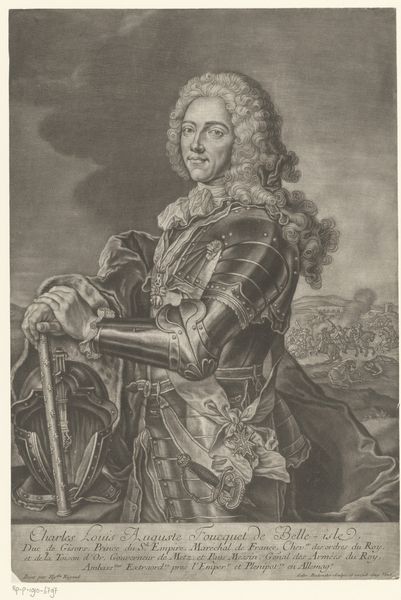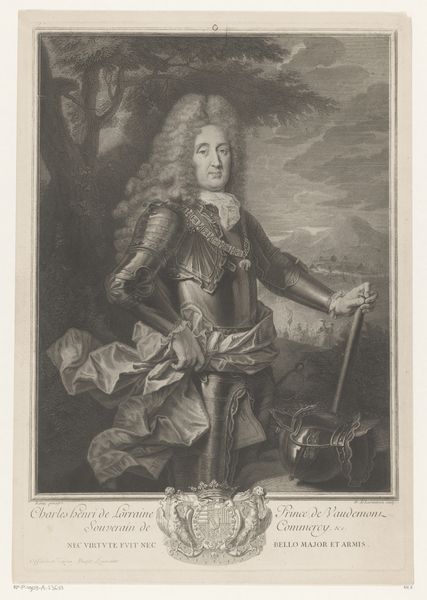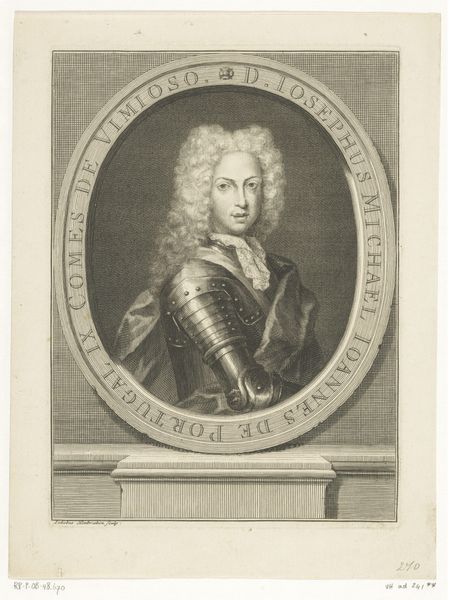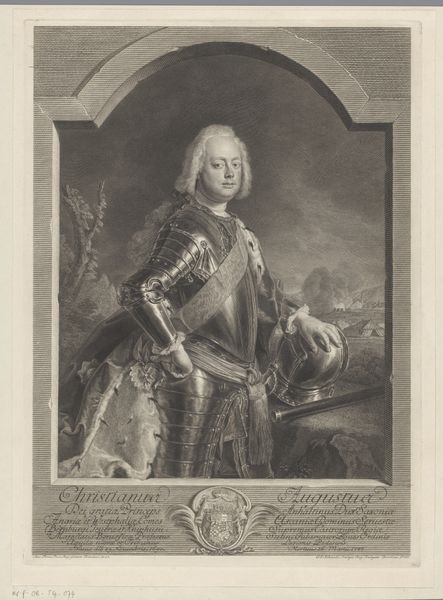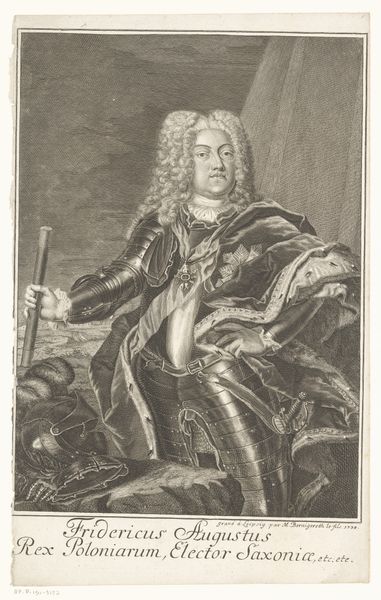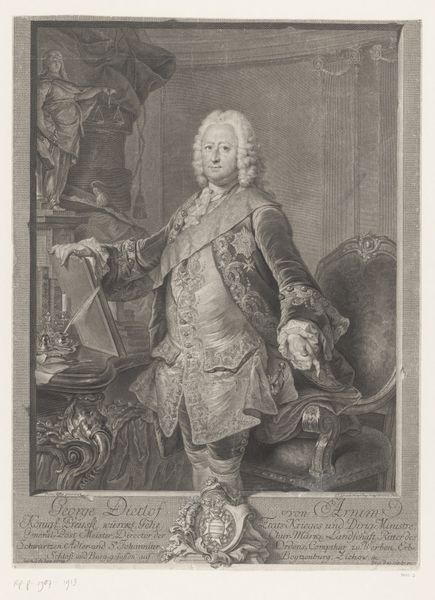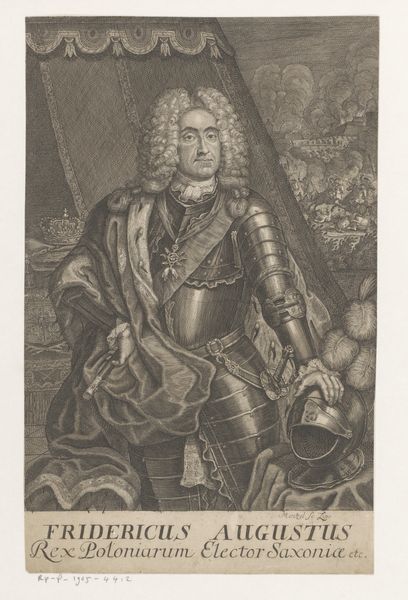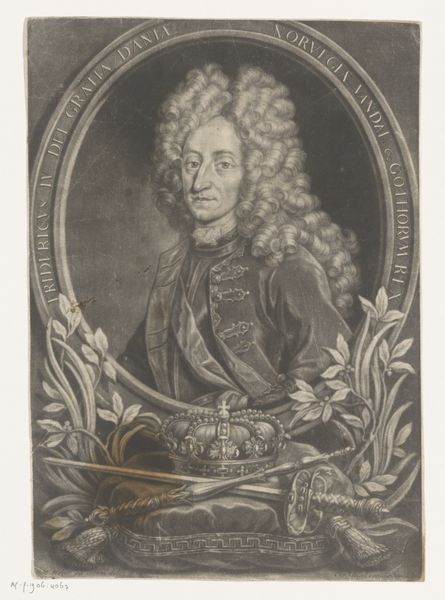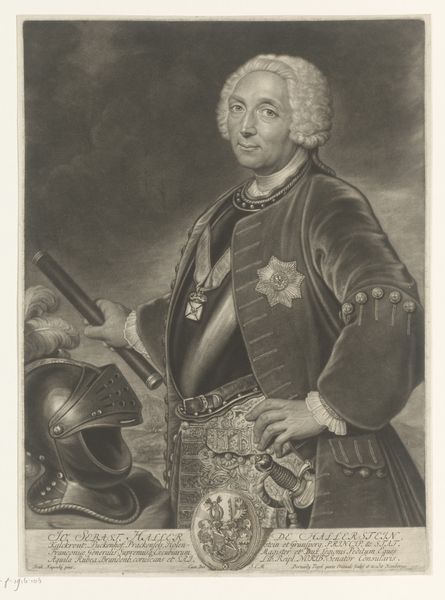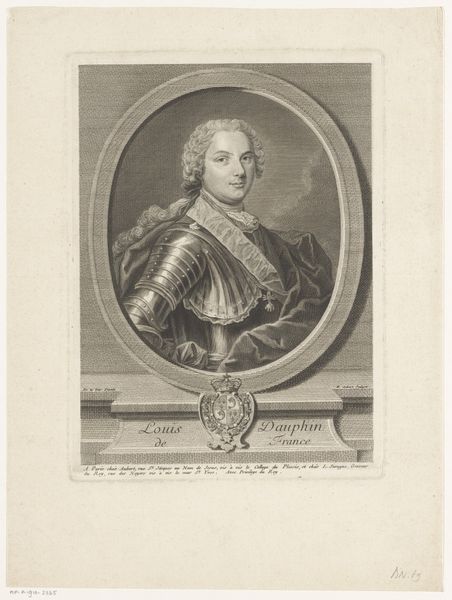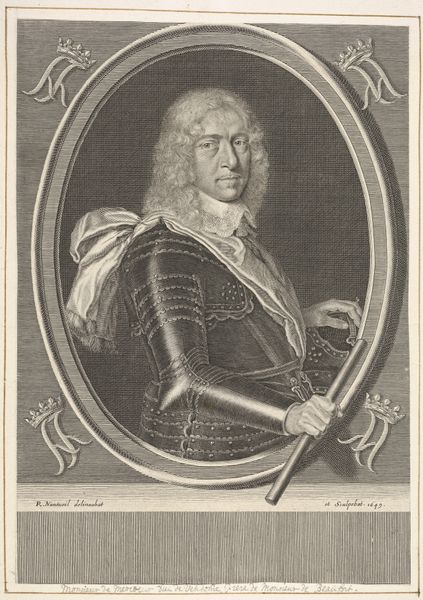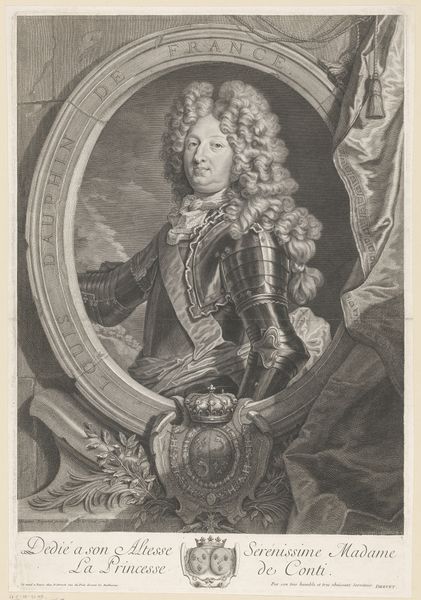
Portret van Charles Louis Auguste Fouquet, duc de Belle-Isle 1743
0:00
0:00
metal, engraving
#
portrait
#
baroque
#
metal
#
old engraving style
#
figuration
#
historical photography
#
15_18th-century
#
line
#
history-painting
#
engraving
Dimensions: height 487 mm, width 342 mm
Copyright: Rijks Museum: Open Domain
Curator: Here we have Johann Georg Wille’s 1743 engraving, “Portret van Charles Louis Auguste Fouquet, duc de Belle-Isle,” currently held in the Rijksmuseum. Editor: The stark, linear quality immediately conveys a sense of formality and perhaps even detachment. The precision is almost unsettling, as if capturing the Duke's very essence under glass. Curator: Wille masterfully employs line and tone to define form, highlighting the textures of the Duke's armor and wig. It’s important to observe how the light falls and contours his figure, separating it from the battle scene in the background. The image construction seems aimed at accentuating rank and status. Editor: Indeed, this highlights the process of printmaking, a laborious and precise endeavor dependent on the engraver's skill to translate the subject's status through meticulous technique. The choice of metal as the printing plate emphasizes its industrial element; images made for broad consumption using highly skilled, craft-oriented labor. The depiction of wealth is inseparable from the process that enables its mass distribution. Curator: Precisely. The subject gazes directly out at the viewer, establishing a powerful relationship that reinforces the Duke’s authority. And we shouldn’t overlook the semiotic importance of armor; a strong symbol for this high-ranking military leader. Editor: One is compelled to think about labor practices within printmaking houses of the time and whether Ville's piece would be considered an "original print" today. Beyond conveying authority, I see a portrait fabricated through division of labor, skill, and ultimately commerce, which shaped visibility in the eighteenth century. Curator: Those economic considerations undeniably played a vital role. Still, by considering elements such as balance and contrast in the engraving, we can decode and unpack the semiotics within this formal depiction. Editor: Reflecting on its means of production lets us glimpse the socio-economic circumstances and labor relationships defining this “old engraving style." Curator: Yes, viewing them through our individual analytical frameworks provides a much richer and satisfying exploration of this engraving!
Comments
No comments
Be the first to comment and join the conversation on the ultimate creative platform.
